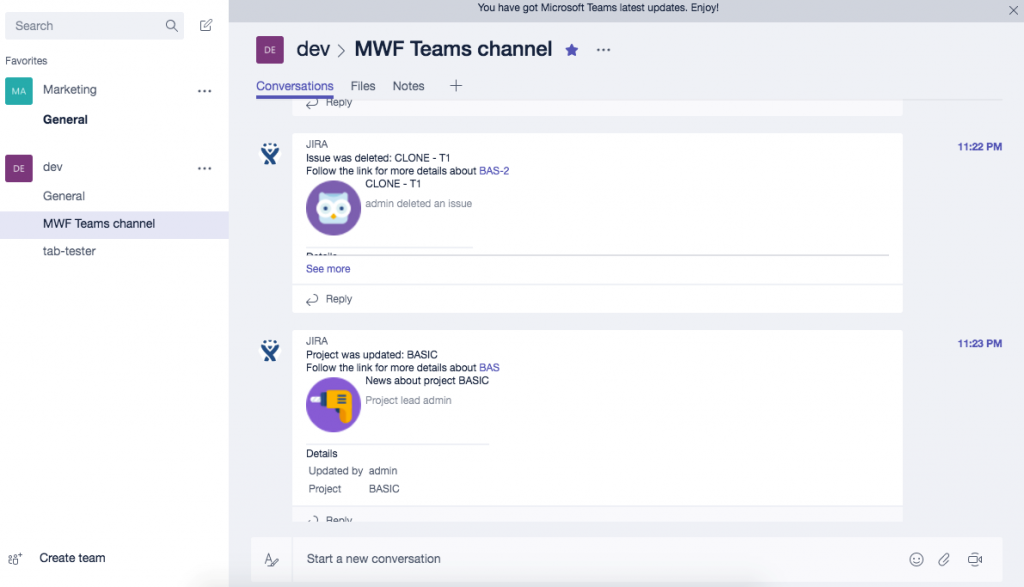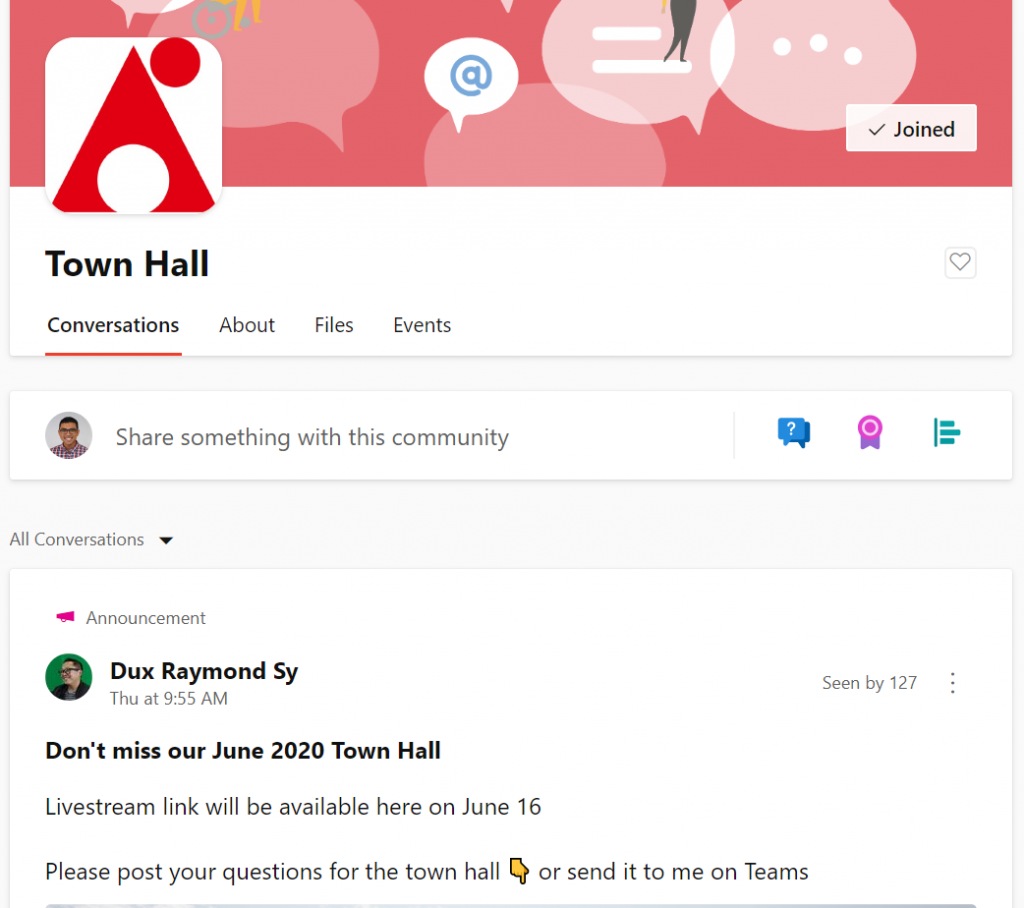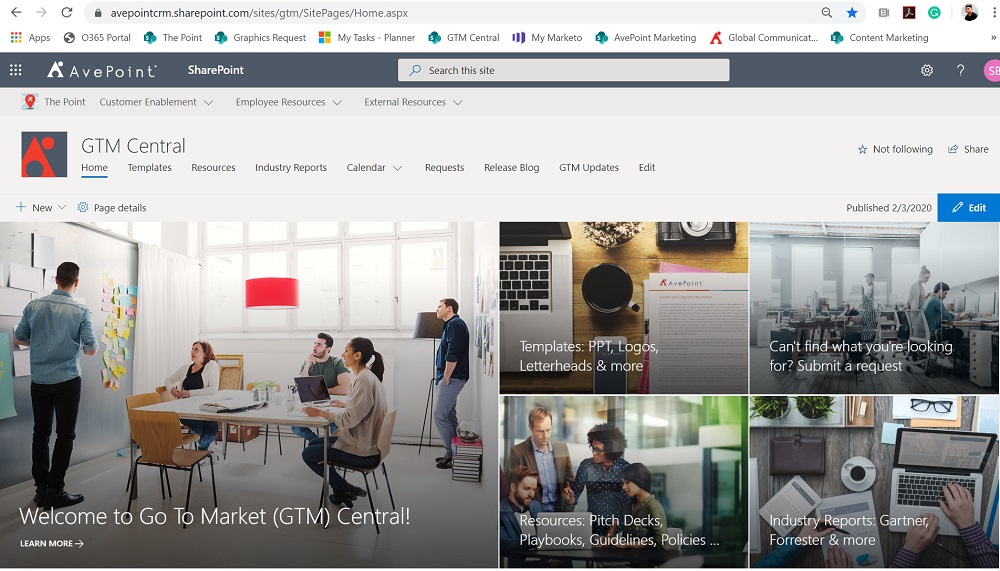Still adjusting to WFH? Watch our webinar “How To Ensure Microsoft 365 Collaboration Success For Remote Workers!“
For anyone new to using Office 365, it can be a bit overwhelming to know what tools to use and when to use them. There are so many applications and virtual workspaces at your disposal that knowing where to store, manage, and create files and collaborate with colleagues can feel daunting to say the least. The goal of this guide is to provide a convenient one-stop-shop for what Office 365 tools to use and when. Let’s dive into it!
Facilitate Teamwork with Microsoft Teams
As the name implies, Microsoft Teams is where most of your day-to-day teamwork with colleagues will take place. We’ve talked in previous posts about the architecture of Microsoft Teams, but let’s highlight some of the key things you should know as an everyday user.
Connect and Collaborate
The first thing that stands out about Microsoft Teams is how you can communicate effectively with anyone in your organization. With chat, call, and meeting capabilities, it makes it easy to have a focal point for where to collaborate.

With SharePoint and Stream on the backend, file sharing and content collaboration becomes even more convenient. Stream enables Teams meetings to be recorded and available on-demand whenever users need them, which is resourceful when it comes to situations like customer engagements, developer/product meetings, and more. With SharePoint, users can share files and collaborate on work without being concerned with version history issues and seeing live edits.
Chat Capabilities
For everyday use, where Microsoft Teams truly shines is its chat capabilities. Whether it be 1:1 or group chat, you can use Teams to have convenient conversations with anyone you need. This helps get users out of email and provides more immediate responses. It also supports persistent chat so you can always refer back to previous conversations, see what files were shared for reference, etc.
The Power of the Microsoft Teams Platform
Microsoft Teams is an especially powerful platform because it’s integrated with other Office 365 apps like Stream and Planner, and can even be extended and customized to include 3rd party apps and existing systems such as JIRA. Because of these integrations, you can take advantage of bots and connectors that can truly make Microsoft Teams the platform for which all your other work is based on. For example, if you wanted to submit or track a JIRA request, you can set up a connector so you can manage it all through Microsoft Teams.

Yammer: Corporate Communication and Knowledge Sharing
While Microsoft Teams focuses on teamwork and day-to-day collaboration, Yammer should primarily be used for company-wide announcements and knowledge sharing between departments. The cross-department communication capabilities are especially useful day-to-day. We recently had a webinar where the Belgium Police explained how they were able to apprehend a graffiti artist who was moving from one region of the country to the other by having cross-departmental communication in Yammer.
Org-wide communication
For company-wide communication, Yammer is ideal for hosting town halls and announcements on any new developments within the organization. For example, we at AvePoint specifically have a Yammer community called “Town Hall” where we host all our quarterly org-wide conversations and announcements.

Yammer Communities
With the new Yammer communities, you can bring together parts of the company that may otherwise not have connected to cohesively. The communities can range from a product development space for sales and developers, to a space focused on how to position products in sales and marketing, to even a community built to share and cultivate company culture.
SharePoint: Department Intranet and Document Library
At its core, SharePoint is a document management platform for organizations. This makes it easy for departments and teams of any size to store, organize, and collaborate on all their information and content. Along with being a platform for document management, it can also be utilized as an intranet site for the entire organization to localize all of their content and resources.

Department’s Intranet
Using SharePoint as an intranet is one of the most resourceful applications for departmental use. By creating a SharePoint site to host information and content in an organized way, it makes it easy for any employee, new hire or old, to find what they need in one convenient location. (As is seen in the example above.)
Organization’s Intranet

Learn how can you govern and manage Microsoft Teams, SharePoint, and Yammer through AvePoint’s Office 365 Governance solution.
As an organization’s intranet, SharePoint is a powerful and convenient way to create a hub for employee needs. It can be used as a launchpad to other departments’ intranet sites or other information like internal resources from HR and customer enablement content.
Collaboration: Any Way You Need in Office 365
There you have it! The three key ways to collaborate in Office 365. From company-wide communication to 1:1 chat, there’s a multitude of ways you can get work done. If you’re an IT admin and you want to learn more about avoiding Teams sprawl or external resources, be sure to check out our resources!

